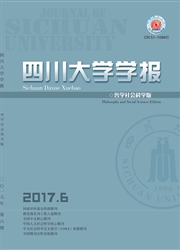

 中文摘要:
中文摘要:
理论上,消费者价格指数(CPI)与购买力平价(PPP)都属于价格测度指标。居民消费支出调查在全球国际比较项目(ICP)项目调查范围内的占比高达70%以上,构成ICP规格品目录的主体部分,而ICP在消费品调查上与CPI有很高比例的重叠性。同时,CPI和PPP指标编制方法类似,统计原理、数据调查和编制过程等非常接近。通过对世界范围内178个经济体2000—2013年的样本研究表明,CPI与PPP呈显著正相关,二者存在密切的长期关联性,短期内CPI可能会使PPP偏离均衡状态,但误差修正机制的存在使这种偏离逐渐向均衡状态回归。同时,PPP对CPI存在价格传递效应,无论是短期还是长期这种效应都与经济发展水平、居民收入有关。CPI和PPP之间紧密的内在关联性为CPI统计和ICP项目的整合提供了有力支持。
 英文摘要:
英文摘要:
Theoretically, both the consumer price index (CPI) and purchasing power parity (PPP) are the indexes for price measuring. The consumer expenditure items account for more than 7 0 % in the survey coverage of the global ICP projects, which constitutes the main part of the catalog of ICP specifications. Furthermore, the ICP and CPI have a high proportion of overlap in price survey of consumer expenditures. Besides, the CPI and PPP are remarkably similar in terms of statistical principles, data investigation as well as compilation methodology. According to the sample of 178 economies in the world ranging from the year of 2000 to 2013, the empirical study finds out that the CPI and PPP are significantly in a positive and long-term correlation with each other. Although the former one may lead a deviation from the equilibrium state to the later in the short run, the error-correction mechanism will stop the deviation gradually. Meanwhile, the PPP has a price pass-through effect on the CPI, and the effect is related to the economic development and residents’ income in short or long term. The inherent correlation between the CPI and PPP provides a strong support for the integration of the CPI statistical system and the global ICP project.
 同期刊论文项目
同期刊论文项目
 同项目期刊论文
同项目期刊论文
 期刊信息
期刊信息
